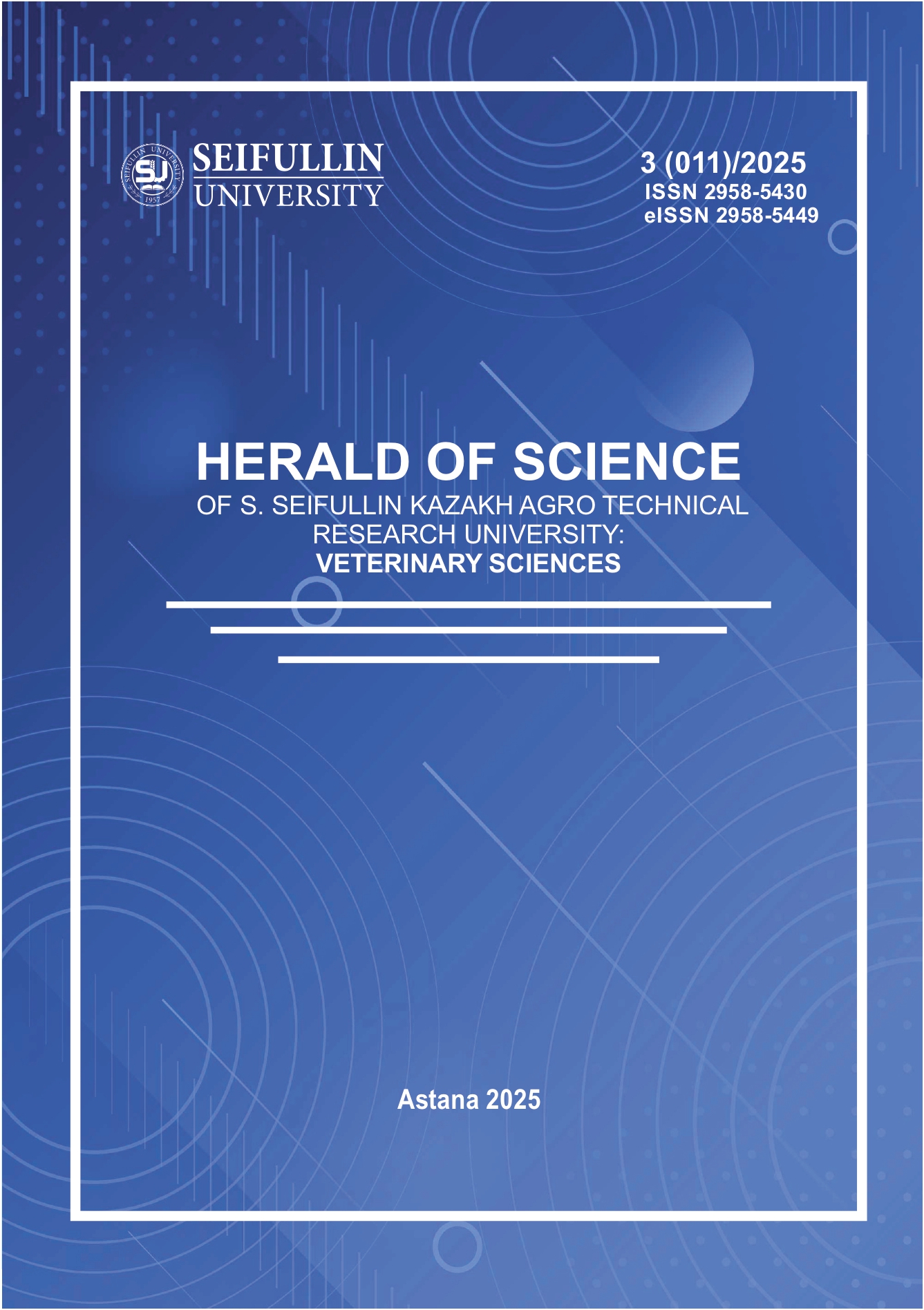Parasitological aspects of animal introduction and acclimatization
DOI:
https://doi.org/10.51452/kazatuvc.2025.3(011).1986Keywords:
acclimatization; animal; helminth; introduction; parasite; protozoan.Abstract
Background and Aim. The introduction and acclimatization of wild ungulates, such as the Bukhara deer (Cervus elaphus bactrianus), are widely practiced to restore populations and biodiversity. However, these processes pose parasitological risks, including the loss and acquisition of native and new parasites, respectively. This study evaluated the parasitological outcomes of relocating Bukhara deer to the Ile- Balkhash State Nature Reserve.
Materials and Methods. In total, 45 fecal samples from Bukhara deer were collected during expeditions in 2024 2025. Samples were preserved and examined using the Fulleborn flotation method with an ammonium nitrate solution (density: 1.3). Microscopic analysis was performed to identify protozoan oocysts and helminth eggs based on morphological features, following standard parasitological references.
Results. In the new habitat, the deer retained host-specific protozoa (Eimeria spp.) but lost several species-specific helminths, including Fasciola hepatica, Echinococcus granulosus, and 13 nematode species. Conversely, they acquired new parasites from the local environment, such as the cestode Anoplocephala perfoliata and the nematode Cylicocyclus insigne. These shifts in parasite fauna reflect both a “parasitological filter” effect and the potential for local parasites to adapt to introduced hosts.
Conclusion.The introduction and acclimatization of wild ungulates significantly influence host– parasite dynamics. A comprehensive parasitological evaluation is vital for managing biological risks and ensuring the ecological safety of wildlife transloctions.

